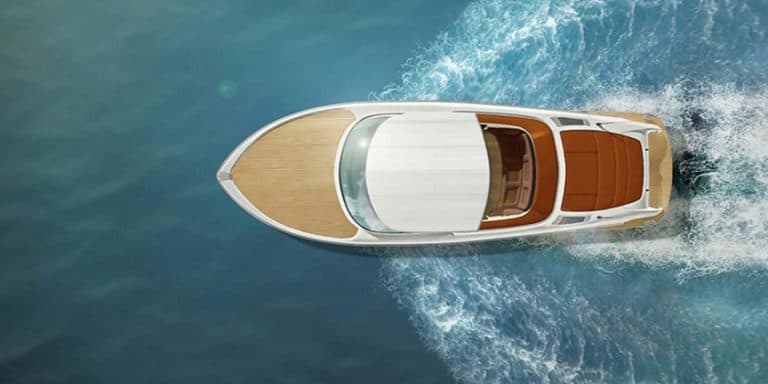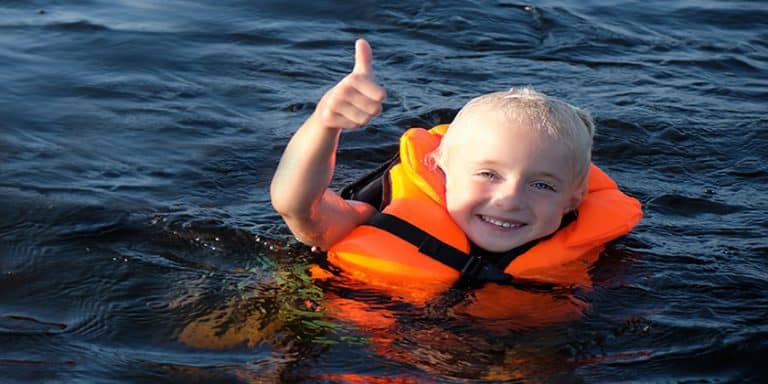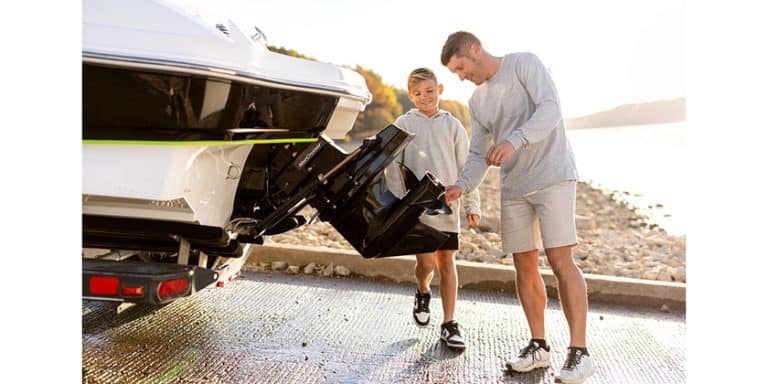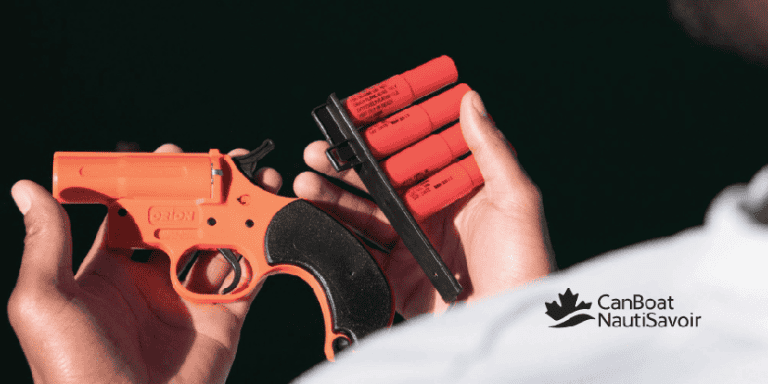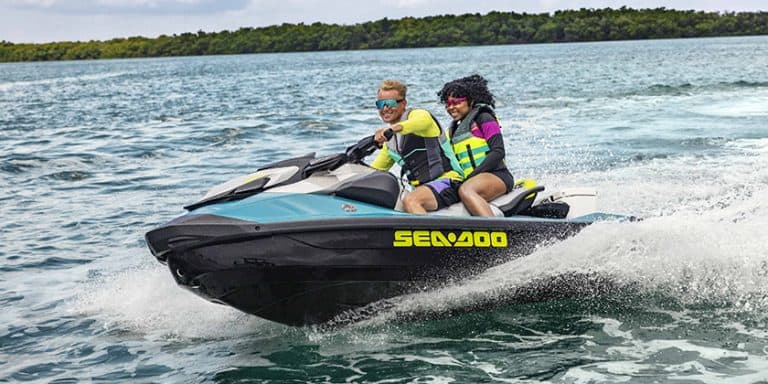Staying Afloat: The Power of PFDs
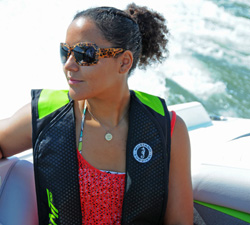
By Duart Snow
Intrepid CY volunteers dive in to test the latest PFDs – and find that comfort and style make them more wearable than ever.
Is it just my imagination – or are more boaters wearing PFDs more of the time today than they used to? It has been reassuring over the past few years to see life jackets, inflatables, floater garments and similar life-saving gear being worn regularly in settings where the sight would have been rare a decade or two ago.
Most cruisers we see today wear PFDs while in their tenders; more cruisers, especially sailors, wear them all the time while under way. Sailboat racing crews – possibly prodded by recent tragedies in their sport – routinely arrive at boats with inflatables in their gear bags and don the PFDs before leaving the dock. Even sport fishermen, a ruggedly independent bunch if there ever was one, are more likely to wear a floater jacket or inflatable while under way or on the bite.
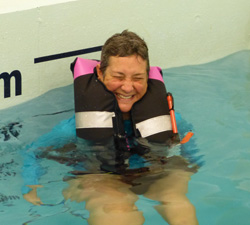 There are likely a variety of reasons for this change in our behaviour. Decades of boating safety messages may finally be having an effect. Or perhaps with age, we boomer boaters have come to accept that we aren’t immortal. But I’m betting that the main reason is that manufacturers have made huge strides in improving the comfort, utility and style of their life-saving products. If a PFD or floater jacket is comfortable, fits well and looks good, you’re more likely to wear it, as you know you should. And PFDs only work when you’re wearing them – so wearability and style add up to a success story.
There are likely a variety of reasons for this change in our behaviour. Decades of boating safety messages may finally be having an effect. Or perhaps with age, we boomer boaters have come to accept that we aren’t immortal. But I’m betting that the main reason is that manufacturers have made huge strides in improving the comfort, utility and style of their life-saving products. If a PFD or floater jacket is comfortable, fits well and looks good, you’re more likely to wear it, as you know you should. And PFDs only work when you’re wearing them – so wearability and style add up to a success story.
This month, CY decided to take a similar soft-sell approach: instead of lecturing you about PFDs and safety, we thought, why not have some fun? Let’s toss some volunteer boaters in PFDs into the water and see what happens. As we prepared this article in March, waters across Canada were frozen or hypothermia-inducing. So we turned to the folks at Mustang Survival of Burnaby BC, a leader in the development of truly wearable water safety gear, and they graciously allowed us the use of their factory test pool and a few current products.
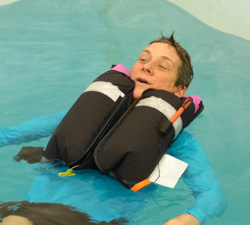 Two of our volunteers, Jan Snow and Lishe O’Kiely, are active boaters and regular wearers of PFDs, inflatables and floater suits. Jared Rhind, a product developer/designer at Mustang Survival who tests gear on the job, also joined the fun.
Two of our volunteers, Jan Snow and Lishe O’Kiely, are active boaters and regular wearers of PFDs, inflatables and floater suits. Jared Rhind, a product developer/designer at Mustang Survival who tests gear on the job, also joined the fun.
Into the Pool
Research consistently shows that wearing a PFD offers a person in the water the best chance of survival. Once in the water, the victim may no longer have access to a PFD, may find it virtually impossible to don one because of rough water, or may be unconscious and unable to help themselves. For interest, however, we asked our volunteers to try putting on PFDs in the water. Jan, with Mustang’s new Catalyst floater jacket, and Lishe, in the new M.I.T. 100 inflatable managed to do it but both are fit swimmers and burned lots of energy in the process. The message here is clear: don the PFD before you find yourself in the water.
 If you’ve never deployed an inflatable PFD, don’t blink when you do – the action is usually over in an instant, too fast for our camera, even at five frames per second. One moment Jan was snugging up an M.I.T. 100, the next she was fully inflated and bobbing happily. (For approval, PFDs need to inflate within five seconds for manual models and 10 seconds for automatic.)
If you’ve never deployed an inflatable PFD, don’t blink when you do – the action is usually over in an instant, too fast for our camera, even at five frames per second. One moment Jan was snugging up an M.I.T. 100, the next she was fully inflated and bobbing happily. (For approval, PFDs need to inflate within five seconds for manual models and 10 seconds for automatic.)
All inflatable PFDs have a backup oral inflation tube that is generally used when testing the unit. It can also be used to top up your PFD if you’re in the water for an extended period before rescue. It’s unlikely you’ll ever find yourself in a rescue situation where you would need to inflate your PFD orally. But we gave Lishe the added challenge of inflating her PFD using only lung power. It took her just six or seven breaths, as well as some tugging to free the Velcro flaps on the harness, before she too was floating safely.
It was especially impressive how comfortably and safely an inflated PFD supports the wearer: head back and well up out  of the water, face clear for breathing, torso firmly supported. Jan tried rolling onto her face in her inflatable – and it routinely nudged her safely onto her back. It might not be what the designers intended, but I can imagine myself some hot day, PFD inflated, bobbing around an anchorage with a cold drink resting conveniently on my chest! And come to think of it, that’s probably a great way to get used to inflating and wearing one when one’s life isn’t at stake.
of the water, face clear for breathing, torso firmly supported. Jan tried rolling onto her face in her inflatable – and it routinely nudged her safely onto her back. It might not be what the designers intended, but I can imagine myself some hot day, PFD inflated, bobbing around an anchorage with a cold drink resting conveniently on my chest! And come to think of it, that’s probably a great way to get used to inflating and wearing one when one’s life isn’t at stake.
And in case you think style doesn’t count, our female volunteers were impressed by the edgy look of the black M.I.T. 100 with its bright shoulder flashes in yellow, blue, apple green and, their favourite, pink. While the black fabric seems counter-intuitive from a visibility standpoint, Jared says the aim is simply to get boaters to wear the PFD – and if the look helps, so much the better.
“We want you to want to wear it! The M.I.T. 100 Type III PFD chassis offers us the opportunity to update the look and feel to better suit the diversified needs of end-users. Several of the colour options tap into our understanding of the role 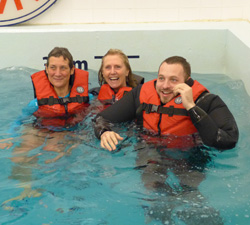 contrast plays in visibility and the vest has two strips of reflective tape which are exposed when inflated. The M.I.T. 100 is the common ground between survival and lifestyle.”
contrast plays in visibility and the vest has two strips of reflective tape which are exposed when inflated. The M.I.T. 100 is the common ground between survival and lifestyle.”
The other PFDs we tested were products for niche markets. An extra-large Accel100 sport fishing vest kept Jared’s tall frame well clear of the water. Lishe tried out a compact, close-fitting Deluxe Paddling Vest that’s intended to provide buoyancy as well as freedom of movement for kayakers and small-boat sailors.
The bottom line of our informal test is that there is a PFD or flotation garment – from Mustang Survival, Salus and many other manufacturers – to suit just about every boater and every kind of on-water activity. And today, they are more comfortable, wearable and stylish than ever before. That should make it even harder for any of us to find excuses not to wear them.
If you’re not in the habit of wearing a PFD on your boat and comfort is an issue, it’s time you checked out the latest  designs for your style of boating. And if you’ve already got the PFD habit, good for you – wear it well!
designs for your style of boating. And if you’ve already got the PFD habit, good for you – wear it well!
The Colour of Safety
Orange, red and yellow are the colours traditionally used in life jackets, flotation wear and life-saving gear intended for use on the water. But just how visible are these colours? Are other colours easier to see, especially when visibility is poor? A recent study by Mustang Survival, with support from WorkSafe BC, turned up interesting results that may change the colours we wear on the water.
Mustang research manager Wendell Uglene conducted the study "to find which colour was most conspicuous when floating on the water because we simply didn’t know." Uglene described the study, entitled “On-Water Visibility” at the 2013 Vancouver International Boat Show.
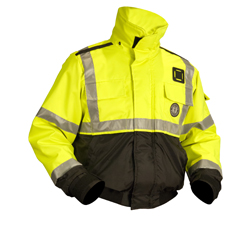 The researchers tested orange, red and yellow, along with fluorescent yellow-green, familiar from the high-visibility safety garb worn by police officers, firefighters, highway flag personnel and other workers in situations where visibility equals safety.
The researchers tested orange, red and yellow, along with fluorescent yellow-green, familiar from the high-visibility safety garb worn by police officers, firefighters, highway flag personnel and other workers in situations where visibility equals safety.
In lab and on-water tests, they found that yellow-green equalled or significantly out-performed the other colours in all light situations but especially in low light. When colour swatches were displayed against an artificial ocean horizon for a group of pilots, boaters and non-boaters, green and orange proved superior to red and yellow.
On-water tests in Vancouver’s English Bay used a buoy about the size of a human head or helmet, covered with hoods of the test colours. Observers including search-and-rescue techs, boaters and non-boaters attempted to spot the buoy as they approached or moved away from it. The green buoy was visible at distances over one kilometre, more than twice as far as red; orange was visible at about two-thirds of a kilometre. Green excelled over the others especially in lower light; orange and green were comparable in brighter light.
Mustang Survival offers a range of products in fluorescent yellow-green including the popular auto-hydrostatic inflatable PFD, industrial foam PFDs and flotation jackets.
PFD Care
Inflatable PFDs
Before putting on your PFD, make sure…
• There are no rips, tears, abrasion or holes, all seams are securely sewn, and the cover, straps and hardware are strong.
• The PFD is not twisted.
• All zippers, closures and waist buckles are secure.
• The oral inflation dust cap is stowed on the oral tube.
• Your inflator status indicator is green. (Some PFDs have more than one status indicator – check your manual)
• The inflation pull-tab is hanging outside the vest.
Every two months…
• Oral inflation test: fully inflate the PFD using the oral inflator, then hold the valve under water. If bubbles appear, deflate the PFD and re-inflate it.
• Air leak test: orally inflate your PFD until it is firm, then let it sit inflated for 16 hours. A PFD with a leak will not stay firm and should be replaced.
• Bobbin inspection and replacement: your inflatable PFD may use a bobbin activation system. This is a yellow “pill” with white powder inside. When the powder dissolves, it activates a pin that punctures the CO2 cylinder and inflates your PFD. Make sure the pill is intact – replace if it appears compromised.
Every year…
• Perform a thorough visual inspection.
• Perform the oral inflation valve test.
• Perform the leak test.
• Clean your PFD.
• Check for dirt and corrosion and replace all corroded parts.
• Record “Annual” in permanent ink on the PFD service record label.
Always…
• Ensure you have spare CO2 cylinders on board and ready to fit to your PFD.
Life Jackets and Floater Wear
• Inspect PFDs regularly for rips, abrasion or holes. Check that all seams are securely sewn, and straps and hardware are strong and fasten securely.
• Clean fabric if necessary with mild soap and water, then rinse well.
• Store PFDs in a clean, dry space such as a hanging locker, preferably on hangers. Ensure they’re dry before storing them.
• Don’t use them as seat cushions – wear them!
Mustang Survival HQ
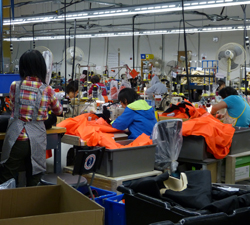 Since founder Irv Davies developed the original “floater coat” in 1967, Mustang Survival has been an innovator in safety and life-saving gear, including today’s inflatable PFDs. While West Coast boaters know the company mainly as our hometown maker of PFDs and flotation wear, its business is only about one-quarter recreational. The major share of its production is for industrial and commercial users, safety professionals such as the US Coast Guard, military customers including the US Navy and Air Force, and even NASA space shuttle astronauts.
Since founder Irv Davies developed the original “floater coat” in 1967, Mustang Survival has been an innovator in safety and life-saving gear, including today’s inflatable PFDs. While West Coast boaters know the company mainly as our hometown maker of PFDs and flotation wear, its business is only about one-quarter recreational. The major share of its production is for industrial and commercial users, safety professionals such as the US Coast Guard, military customers including the US Navy and Air Force, and even NASA space shuttle astronauts.
Headquartered in Burnaby BC, Mustang Survival also has offices in Bellingham, Washington and Annapolis, Maryland, as well as two factories in West Virginia. About 200 of its 400-plus employees work in the BC plant, and many of them have been with the company for decades.
Shannon Ward, director of recreational and commercial business development, guided us through the Burnaby factory, a former cheese plant that Mustang Survival occupied in 2010. On the day of our visit, production was devoted to an order of orange floater jackets for the US Coast Guard Auxiliary; on another day it might be recreational products or an order for another commercial or military customer.
The factory ceiling towers above the production line, and samples of all products hang on racks that can be lowered if employees need to confirm how a finished item goes together. In the testing area, bags of inflated PFD bladders are hoisted up at the end of each day – they pass the test if they’re still inflated the next day.
From product lab and test pool to the factory floor, our visit with Mustang Survival was an interesting glimpse into the company’s commitment to innovation in the cause of safety.
Duart Snow is editor of Canadian Yachting West.
Photo Captions:
Photo 1 – Comfort and style make today’s PFDs more wearable than ever – and they only work when you wear ‘em!
Photo 2 & 3 – Bam – you’re inflated! An M.I.T. 100 takes Jan Snow by surprise, then supports her comfortably.
Photo 4 & 5 – Lishe O’Kiely orally inflates an M.I.T. 100 – rarely necessary but not difficult to do.
Photo 6 – Jan and Lishe join product designer Jared Rhind, happily afloat in a range of conventional PFDs.
Photo 7 – Jan gets confortable in a Catalyst floater jacket.
Photo 8 – High-Visibility Bomber Jacket.
Photo 9 – Sewing team at work on an order of floater coats.

